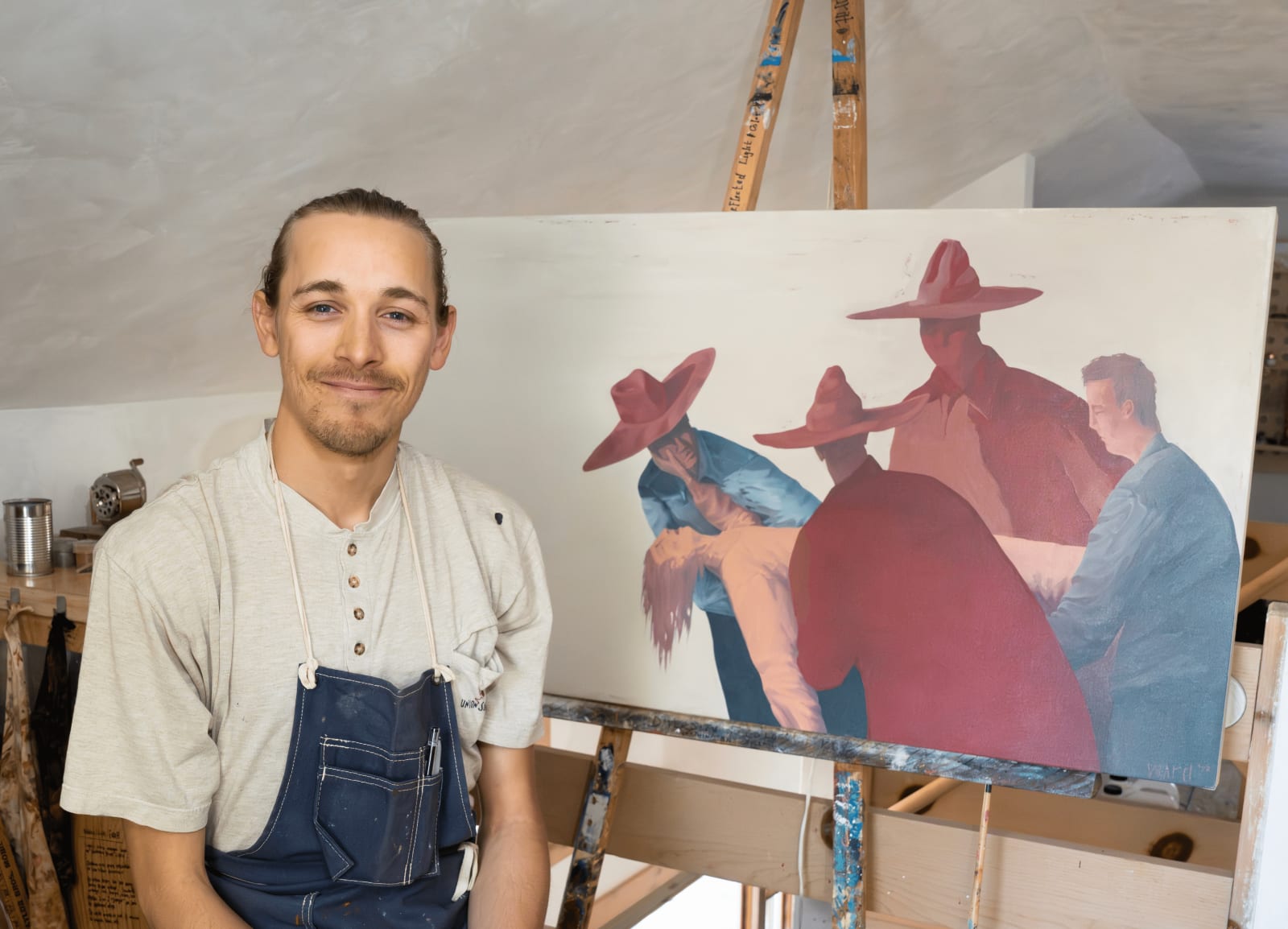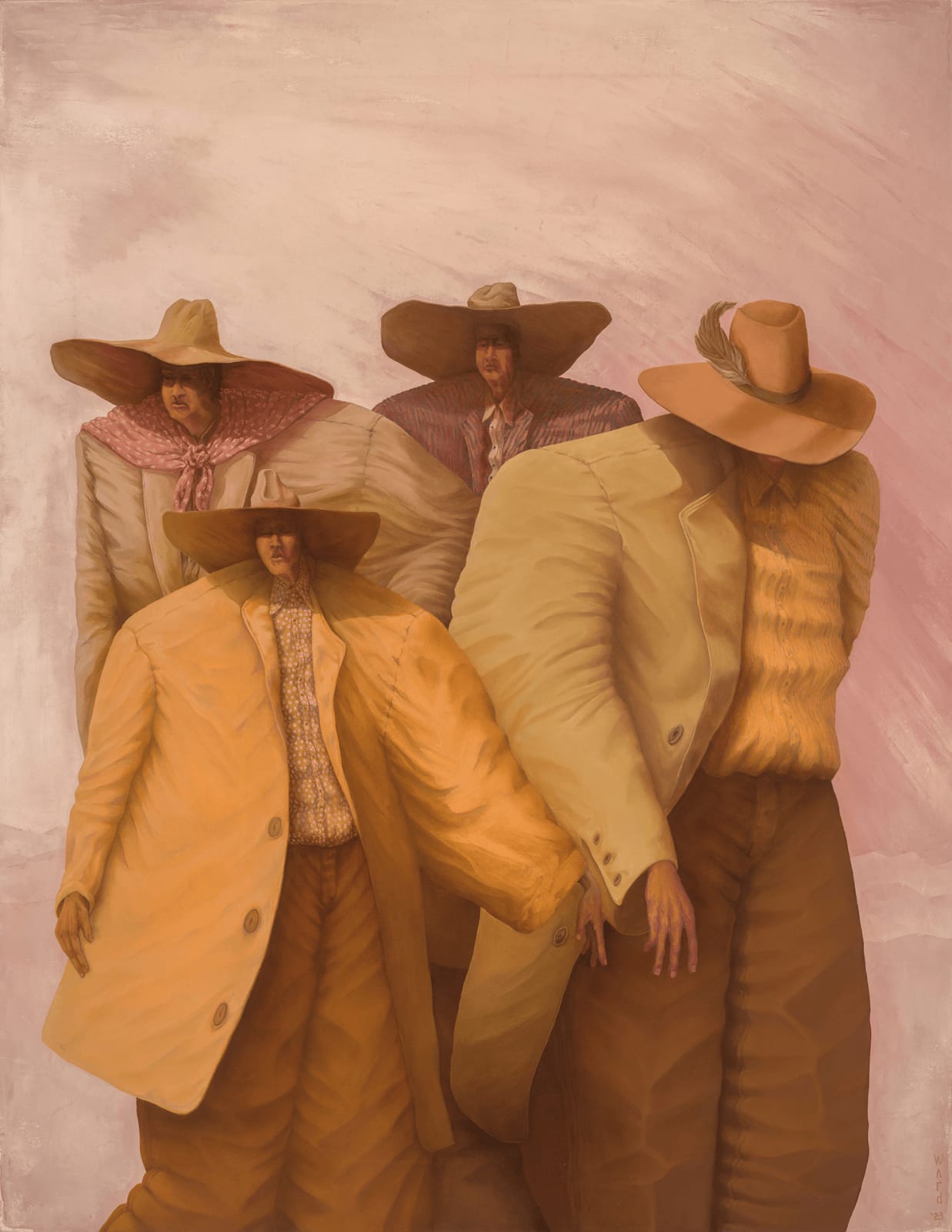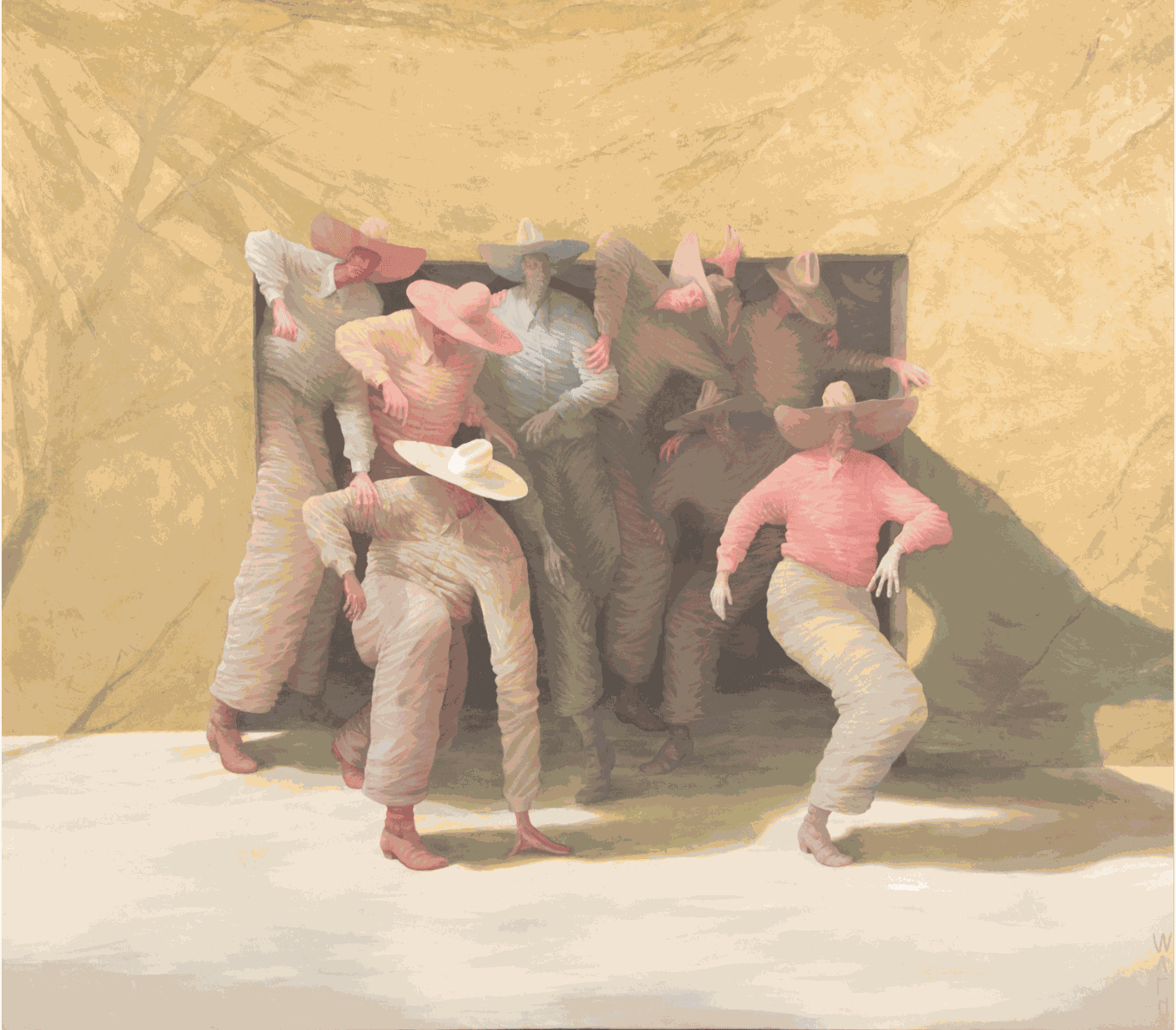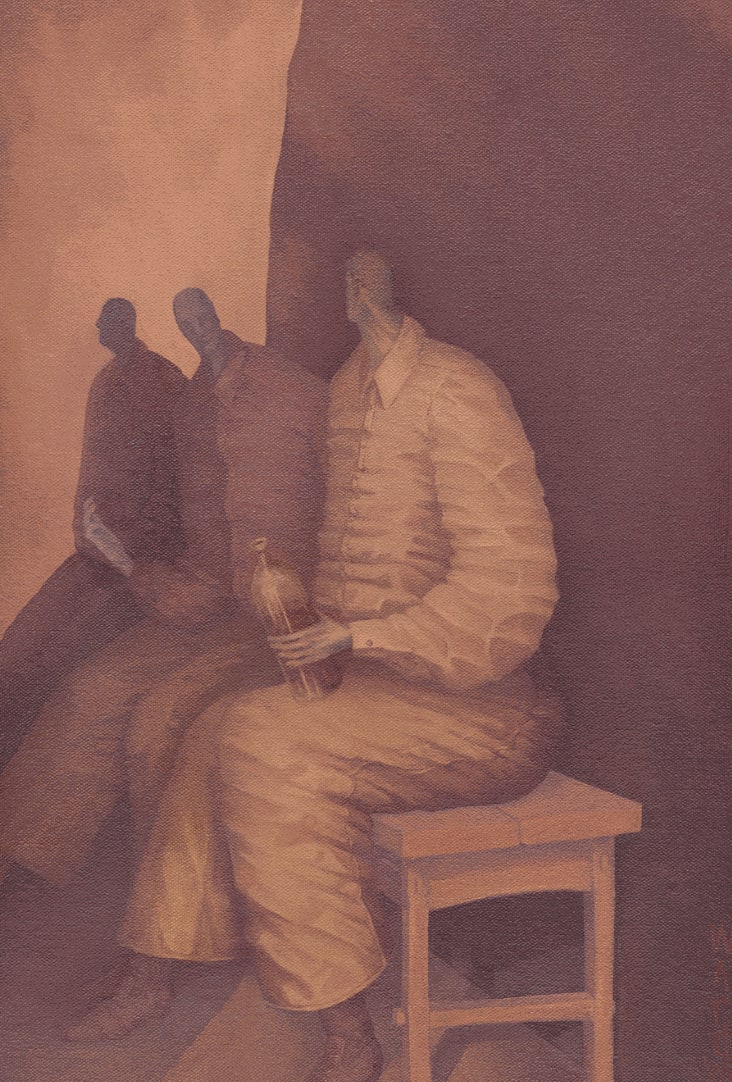Although much about the Great American West and cowboys out on the range is myth, those images and fantasy endure. But the young artist Nicholas Ward seeks to redefine those preconceived notions, while also embracing some of that mythology. Ward not only lives and works in the West, high up in Colorado's Roaring Fork Valley, but he also continues to depict the culture of the cowboy in the landscape. His large-scale canvases reveal elongated, mostly male figures, garbed in widebrimmed cowboy hats, wandering amid somber Western skies and outcroppings. They appear to be lost in thought, assembled and moving in small groups, sometimes attending to the death of one of them. "I sort of see the West as existing more in popular culture than oftentimes in reality," Ward says from the porch of his studio/home that was once a horse barn. "The public's imagination about the West exists more from film or the old dime novel, and all of my distorted figures are a nod to that fact. There's a specific type of Western art that's theatrical in style-the mountain man attacking a bear, a shootout on the street, a raid on American Indians." Ward characterizes his Western scenes, populated by brooding figures, as a form of "magical realism." He embraces a term that a friend once used to describe his work: Western Funk. "It's pretty apt," he says. "I'm pursuing a more contemporary look at the West." Ward may live deep in the Western countryside, with the sounds of the Roaring Fork River nearby, but he creates and lives with these imagined figures. He spends most mornings sketching in his studio or out on the land. "Through the sheer quantity of these iterations and sketches I do, I come to something impactful. I'll sketch compositions from random sights and then I'll suddenly work in human figures. Pretty much every figure is imagined. I don't work with models." His home is situated in tiny Glenwood Springs, a locale Ward describes as being sited in a somewhat temperate, desert-like micro-climate of the Rocky Mountains. His color palette reflects his locale. "Where I live is colorful in its own right, but also the colors in this part of the world are muted. Different clay veins run throughout the green hillsides, but they assume earth tones. There's a harmony to these colors. They appeal to my eye." While the West has long produced a lot of art and artists, Ward has emerged as one of the vast region's best new and most soughtafter practitioners. "I think that today there are more artists who are doing a different 'take' on the West. Now that everybody has a camera in their pocket, it doesn't make as much sense to emulate what a camera can do so well. That's not to say that a realist painting isn't a valid pursuit, but I think what a painting is supposed to be about is a human occupying an imagined space that doesn't exist anywhere else."
By David Masello





